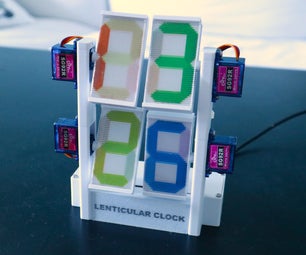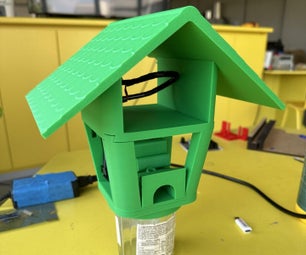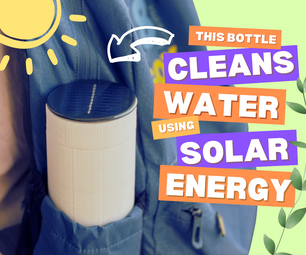Introduction: Solar Portable Power-Supply/Charger DIY
Solar power is the way of the future. It's clean and convenient. This project will show, step by step, how to make a portable 5 volt solar power-supply/charger that can be attached to the back of a bag.
Step 1: Materials
Project specific supplies:
- 1 solar panel (6-12 volt, 2 watt)
- 1 potentiometer (1k ohm)
- 1 switch
- 1 USB port (can be salvaged from anything-I used a phone charger)
- 1 LED
- 1 10 ohm resistor
- 1 330 ohm resistor
- 1 .1nF ceramic capacitor
- 1 4700 uF electrolytic capacitor
- 1 digital voltmeter
Miscellaneous supplies:
- Electrical tape
- Soldering iron and solder
- Breadboard (solderless and/or solderable)
- Multimeter
- Wires
- Scissors
- Saw
- Clamp
Step 2: Circuit Design - Theoretical
Science time.
Vout = (Vs * R2) / (R1 + R2)
This equation is helpful to create a simple voltage splitter. Theoretically, the solar panel should supply a constant 6 volts and we want 5 volts (computer voltage) soo...
5v = (6v * R2) / (R1 + R2)
Since there are still two unknowns, I used a resistor I had on hand to start the calculations. R1 = 10 ohms
5v = (6v * R2) / (10ohm + R2)
5(10 + R2) = 6R2
50 + 5R2 = 6R2
R2 = 50
Solving for R2 with some algebra, we get R2 = 50 ohms. Luckily I had a 50 ohm resistor on hand, so I could use that (pic 2 and 3).
However. This was tested without a load and resulted in a completely inaccurate voltage at first. When a load is applied, it corrects to nearly 5 volts! Of course the light in this photo was midday, so the solar power was the most reliable.
Step 3: Circuit Design - Experimental
I replaced R2 with a potentiometer to find the exact resistance needed to get 5volts output midday. I used the multimeter on the ohm setting to measure the potentiometer resistance. The multimeter read ~51 ohms. The resistor is close enough for our purposes.
Step 4: Mining the USB Port
No device uses wires to power it. Instead, a USB port will be attached to the circuit to ensure accessibility by a vast number of electronics.
Picture 1:
- Clamp down wall adapter with plug face out
- Saw off side with plug
- Cut a groove in the corner and then saw gradually across
Picture 2:
- Unclamp and re-clamp with an adjacent side facing out
- Repeat sawing
- Take out innards, but do not touch
Picture 3:
- Use a screwdriver with a rubber grip to discharge any capacitors for safety
Picture 4:
- With a combination of the saw and a soldering iron, remove the USB port from the PCB
Picture 5:
- Solder wires onto the ground and positive terminals of the USB (outer wires)
- Test the supply by attaching wires to a power supply and attempt to power anything (I powered a trinket)
Step 5: Testing USB Port
Attach the solar power circuit to the USB port and test again.
Step 6: Charging Battery Attempt #1
I connected a 2000mAh lithium polymer battery (with connected charging circuit) to the output of the USB port on the charger.
There was no noticeable difference 10 minutes later in the battery. The battery might have been damaged when removed from its packaging. This will be investigated again in a later design.
Step 7: Soldering and Gluing
To make the device more portable, I soldered everything onto a solderable breadboard. The USB port kept coming off when I attached a USB cable, so I hot glued it to the board (Picture 3).
Picture 4: Test in sunlight again to make sure it still works.
Pictures 5-7: I hot-glued the board to the back of the solar panel but later took it off for more development.
Step 8: Redesign - Potentiometer
After further tests later in the day, I realized the solar panel could not provide the same voltage all day. I replaced R2 (50 ohms) with a potentiometer that needs a screwdriver to change the setting. While more inconvenient to change, it ensures that the potentiometer is not accidentally moved.
Step 9: Further Development
I added a digital voltmeter to display the current voltage on an LCD to allow easy manipulation of the output voltage.
Step 10: Conclusion
The current prototype has a stable output of 4.5 volts (with a load) in sunlight through the afternoon and a stable 3.8 volts (with a load) while cloudy/in the shade. Further tests will be run to determine whether a stable 5 volts is obtainable.

Participated in the
Travel Contest 2017

Participated in the
Explore Science Contest 2017

Participated in the
Power Supply Contest










